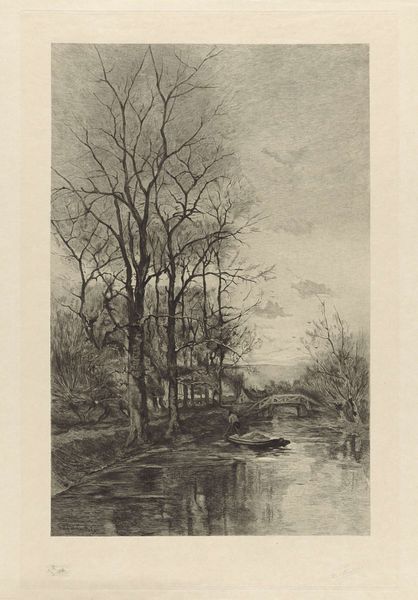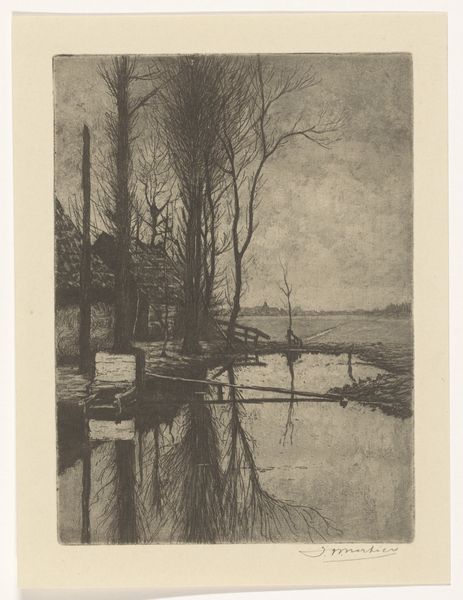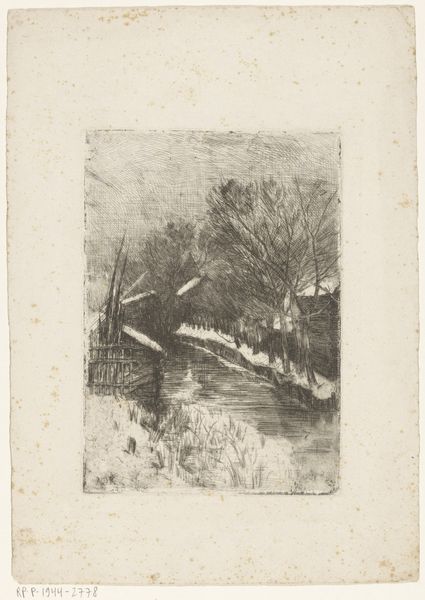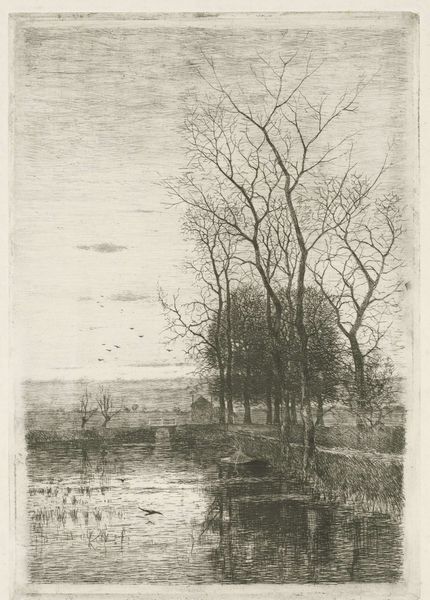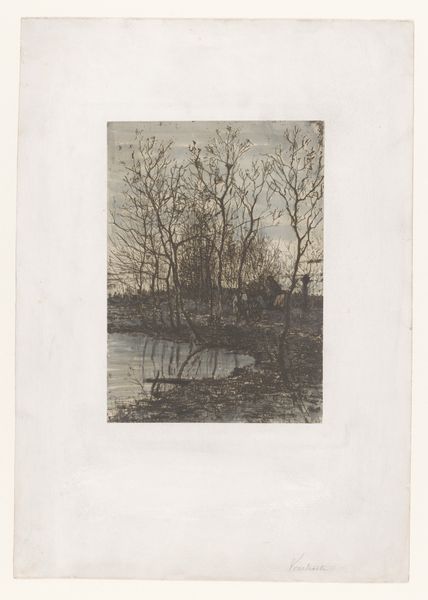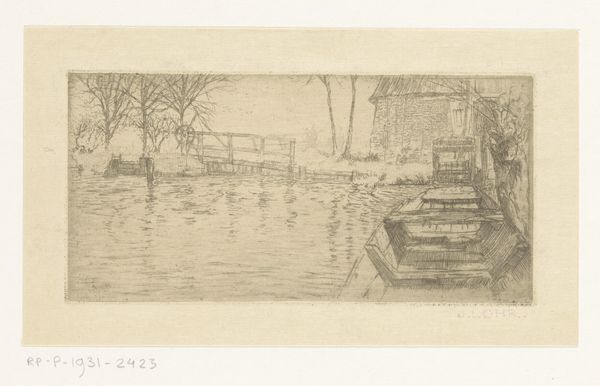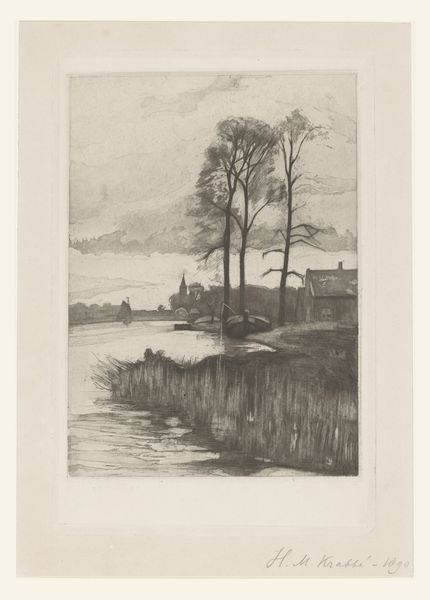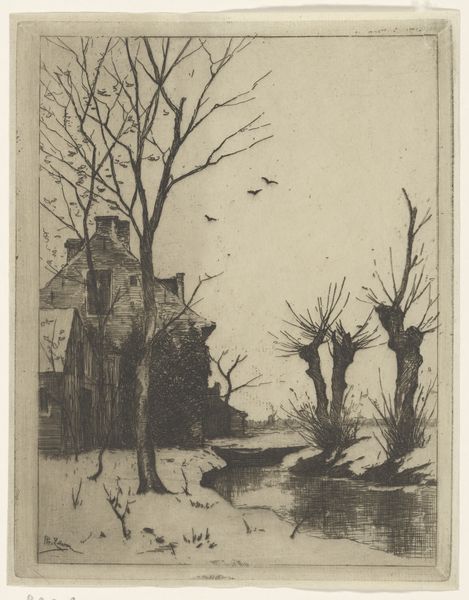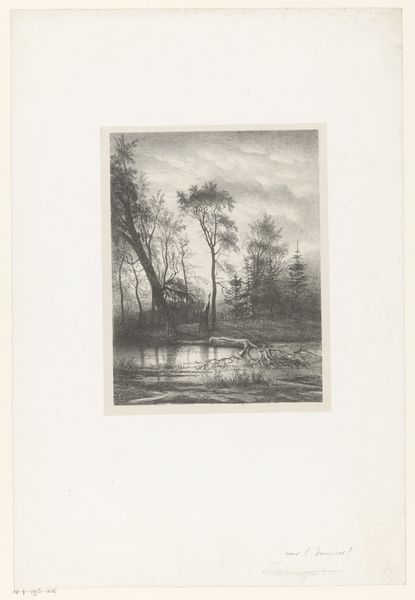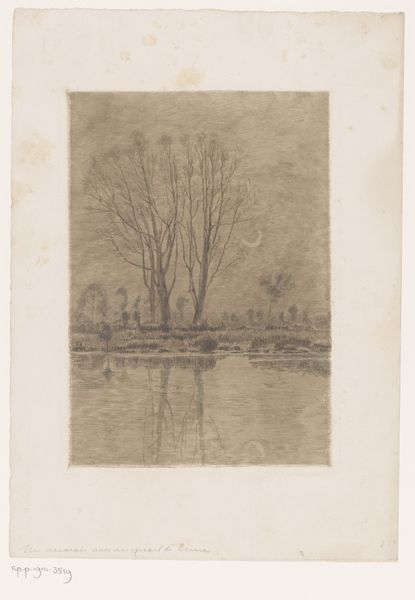
Dimensions: height 354 mm, width 221 mm
Copyright: Rijks Museum: Open Domain
Curator: Let’s discuss Theodore Roussel’s "Gezicht op een rivier met haven en industrie," which roughly translates to "View of a River with Harbor and Industry." This etching, dating from around 1889 to 1898, presents a rather evocative scene. Editor: Immediately, I'm struck by the atmospheric stillness. It's a quiet industrial scene, softened by the delicate rendering of the trees and water. The sepia tones give it a somewhat nostalgic, even melancholic feel. Curator: Indeed. Roussel was deeply invested in printmaking, pushing the boundaries of etching as a medium. Here, notice the various bitings and the textures he achieves. Look at the density of lines used to create shadow, versus the sparser areas used to suggest light reflecting on the water. The manufacturing and labor that went into such a complex process deserves consideration. Editor: Absolutely, and that labor echoes the scene itself—the depiction of a working harbor. Considering the period, this piece offers a glimpse into the industrialization of Europe. We see the infrastructure, the means of production reshaping both the landscape and the lives of the people within it. One must ask what class of workers created this infrastructure that Roussel then reproduced here. Curator: The composition itself also invites consideration. The placement of the trees acts as a framing device, leading the viewer's eye towards the industrial activity in the background. These material considerations were important in differentiating etching from simply reproductive techniques like lithography. Editor: Framing is a powerful concept. Through his etching, Roussel isn't just documenting a scene, but choosing to center a specific perspective. We're looking *through* nature and to labor, through these skeletal trees into a grimmer cityscape. I wonder, does this harbor facilitate global trade or colonial expansion? It invites such interrogation of place and space in Europe at the time. Curator: Those points are essential. I see his method reflecting his broader ambitions— to elevate printmaking from a mere reproduction of artworks to its position today as a vehicle for genuine creative output. Editor: And as an output, it reflects its own context, raising urgent, vital social issues through artistic practice. Curator: Indeed, it’s an intriguing intersection of method and message. Editor: One we have begun to untangle today.
Comments
No comments
Be the first to comment and join the conversation on the ultimate creative platform.
